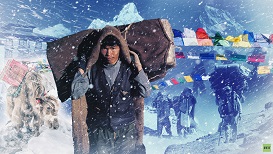 Kim Jong-un arrives in Russia
Kim Jong-un arrives in Russia
The North Korean leader will meet with President Vladimir Putin to discuss a number of “sensitive issues,” the Kremlin has said | The armored train carrying North Korean leader Kim Jong-un has crossed into Russian territory ahead of the summit with President Vladimir Putin, Kremlin Press Secretary Dmitry Peskov confirmed in the early hours of Tuesday. ● Earlier in the day, Kyodo news agency quoted local Russian sources as saying that Kim’s train was heading north along the coast after stopping at the Khasan railway station on the North Korean-Russian border. Later, RIA Novosti reported that he crossed the Razdolnaya River, not far from Vladivostok. ● Vladimir Putin arrived in Vladivostok on Monday on a two-day visit to attend the Eastern Economic Forum.
■ N Korea's Kim in Russia for Putin talks as US warns on arms deal (Hürriyet Daily News)
■ Kim Jong Un leaves Pyongyang on special train for visit to Russia (TASS)
■ LIVE UPDATES: Far East, Russia's New Weapons and Economy of The Future - Putin at EEF 2023 (Sputnik News)






